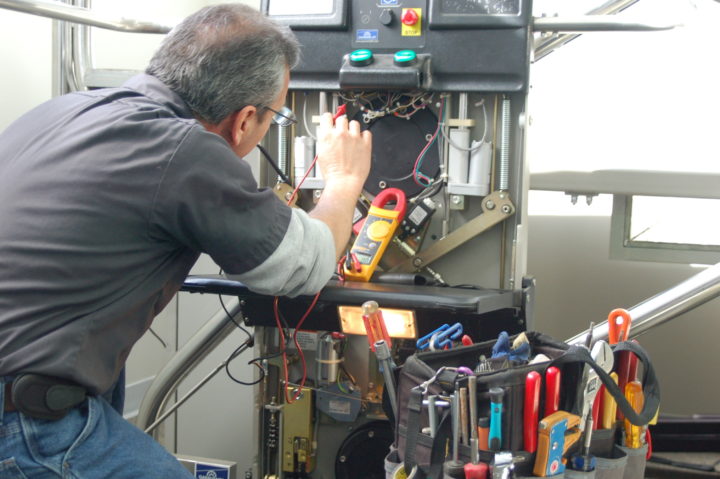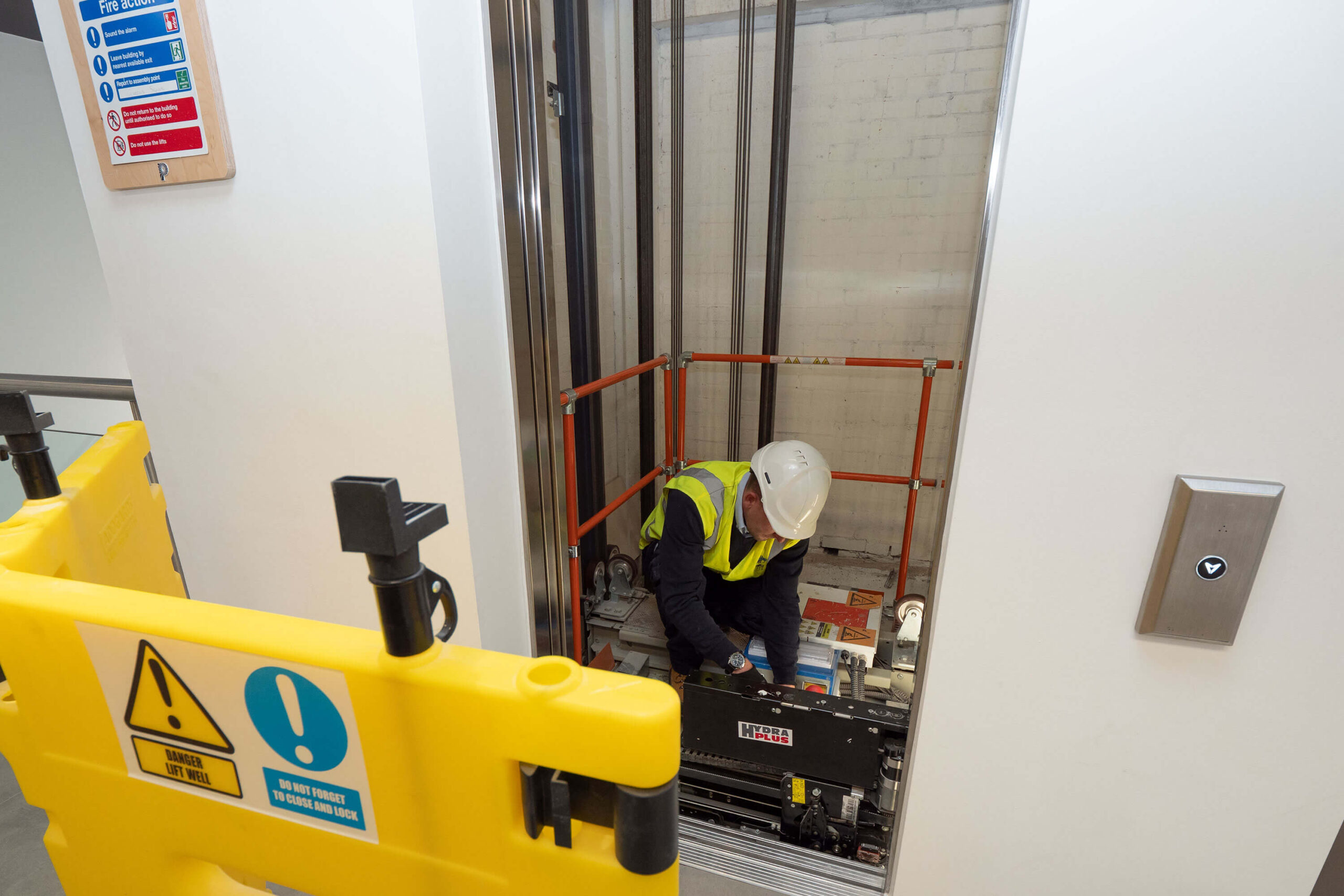Recognizing System Lift Capacities: Essential for Effective Lift Service
Recognizing System Lift Capacities: Essential for Effective Lift Service
Blog Article
A Comprehensive Technique to Enhancing Performance Through Strategic Lift Repair Work Techniques
In the realm of facility administration, the efficiency and reliability of lifts play a critical role in ensuring smooth operations. A tactical and organized method to raise repair and maintenance is important to make the most of efficiency and reduce downtime. By resolving typical lift issues, implementing proactive maintenance steps, and creating targeted repair work strategies, centers can optimize their lift systems to operate at peak efficiency degrees. However, the secret to attaining sustained improvement depends on utilizing data-driven understandings to inform decision-making processes and drive continuous improvement. This thorough method to boosting lift performance through tactical fixing techniques holds the guarantee of not just enhancing operational performance but additionally expanding the lifespan of lift systems.
Value of Lift Performance Optimization
Understanding the significance of enhancing lift performance is vital for ensuring reputable and efficient upright transport systems in various buildings and frameworks. Lifts are essential components of contemporary facilities, offering vertical mobility for occupants and goods within buildings of varying heights. By maximizing lift performance, structure owners and center supervisors can improve individual experience, enhance power performance, and rise general operational efficiency.
Reliable lift efficiency optimization includes various variables, including speed, capacity, power safety and security, upkeep, and usage demands. Effectively optimized lifts can minimize wait times for users, particularly in high-traffic buildings, resulting in enhanced complete satisfaction and efficiency. In addition, optimized lifts contribute to power savings by using innovative control systems and technologies that reduce power usage without compromising performance.

Identifying Common Lift Issues
Determining typical lift concerns is important for keeping the functional effectiveness and safety of upright transportation systems in structures. This concern can be a sign of problems with the lift's electric motor, control system, or even the placement of the lift auto.
Another prevalent lift problem is strange noises emanating from the lift shaft or machinery room. These sounds can range from grinding or scraping noises to loud clunking sounds, every one of which may signify underlying mechanical issues that need prompt attention. Additionally, regular door breakdowns, such as doors not opening or shutting correctly, can disrupt the smooth flow of passengers and present safety and security dangers.
Carrying Out Proactive Maintenance Measures
To enhance the efficiency and durability of lift systems, proactive upkeep procedures play an important function in making certain operational integrity and safety. lift repair. Implementing proactive upkeep involves systematically examining, maintenance, and repairing parts prior to they fall short, hence protecting against pricey downtime and possible security dangers. Consistently scheduled inspections can help identify small problems prior to they rise into significant issues, inevitably expanding the life expectancy of lift systems
One secret element of proactive maintenance is creating a detailed upkeep schedule based on maker recommendations and market best methods. This routine must detail tasks such as lubrication, alignment checks, and part substitutes at specified intervals. Additionally, carrying out problem tracking methods, such as resonance evaluation and thermal imaging, can help find very early indications of wear or malfunction.
Furthermore, training upkeep personnel on proper examination methods and preventive upkeep treatments is necessary for the effective implementation of aggressive upkeep procedures. By fostering a society of proactive maintenance within an organization, lift systems can run at peak efficiency levels, minimizing disruptions and making sure the safety of users.
Creating Targeted Repair Service Plans
Upon assessing the maintenance records and performance data, the engineering group can establish targeted repair service plans to resolve specific problems and optimize lift system performance. These repair work plans are customized to the recognized troubles, guaranteeing that sources are concentrated on settling essential problems effectively. By focusing on repair work based on their effect on performance and security, the targeted fixing plans aid lessen downtime and maintenance costs while making best use of the lift system's dependability.
Developing these plans involves a thorough evaluation of the lift system parts, consisting of electric motors, cable televisions, brakes, and control systems. Through this comprehensive evaluation, the design team can determine the origin causes of any kind of breakdowns or degradation in efficiency. This details is after that used to develop a roadmap for the repair work process, outlining the needed actions, timeline, and sources called for to deal with Get More Information each problem properly.
In addition, targeted fixing strategies may include preventative actions to boost the lift system's durability and performance. By proactively attending to potential problems before they intensify, these strategies add to the overall performance and security of the lift system.
Making Use Of Data-Driven Insights
Utilizing the power of data-driven view publisher site understandings is important in enhancing lift system performance and upkeep effectiveness. These predictive maintenance techniques assist stop unanticipated failures, decrease downtime, and prolong the life-span of lift systems.

Verdict
Finally, enhancing lift performance is important for guaranteeing effectiveness and security in structures. By identifying common lift problems, carrying out aggressive maintenance steps, establishing targeted repair plans, and utilizing data-driven understandings, organizations can boost efficiency and minimize downtime. It is important to take a thorough approach to lift repair work approaches to maximize operational performance and make certain the durability of lift systems.
By addressing typical lift problems, executing aggressive upkeep steps, and establishing targeted repair service plans, facilities can optimize their lift systems to run at peak performance levels.Another widespread lift problem is strange noises originating from the lift shaft or equipment space.Upon analyzing the upkeep records and efficiency data, the engineering group can develop targeted repair work strategies to optimize and resolve specific issues lift system performance. By focusing on repairs based on their effect on efficiency and description security, the targeted repair work plans assist lessen downtime and maintenance prices while optimizing the lift system's dependability.
It is important to take a detailed technique to raise repair approaches to make best use of operational effectiveness and make certain the long life of lift systems.
Report this page